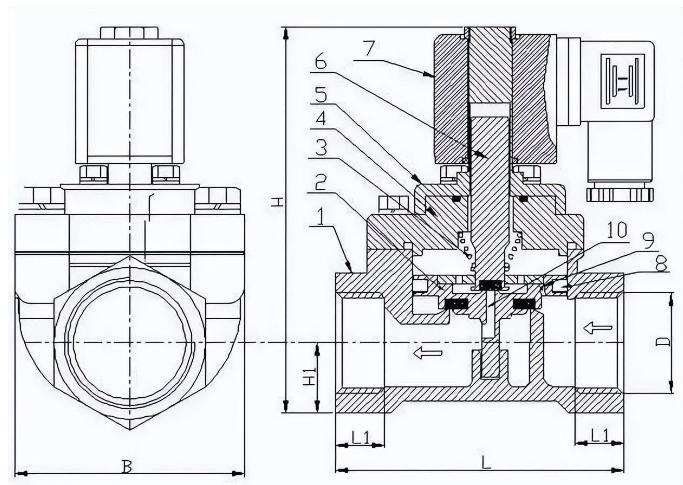Solenoid valve is an industrial equipment controlled by electromagnetism, is used to control the basic components of fluid automation, belongs to the pneumatic actuator, and is not limited to hydraulic and pneumatic.
The solenoid valve has a closed cavity with through holes at different locations, each hole is connected to a different oil pipe, the middle of the cavity is a piston, and the two sides are two electromagnets, which side of the magnet coil is energized the valve body will be attracted to which side, by controlling the movement of the valve body to open or close the different oil discharge holes.
And the inlet hole is always open, the hydraulic oil will enter the different discharge pipes, and then through the pressure of the oil to push the piston of the cylinder, and the piston drives the piston rod, and the piston rod drives the mechanical device. This controls the mechanical movement by controlling the current flow of the solenoid.
Solenoid valves are divided into three main categories in terms of working principle:
一、direct-acting solenoid valve


①spring ②coil ③spool ④seat ⑤seal ⑥outlet ⑦inlet
Principle: Normally closed type when energized, the solenoid coil generates electromagnetic force to lift the open part from the valve seat, the valve is open; when the power is off, the electromagnetic force disappears, the spring presses the open part on the valve seat, the valve is open. (Normally open type is the opposite of this)
Features: in the vacuum, negative pressure, zero pressure can work properly, but the passage diameter is generally not more than 25mm.
二、 The step-by-step direct-acting solenoid valve


Distributed direct-acting type structure diagram
1:valve body; 2:piston; 3:piston spring: 4;middle cover: 5:upper cover; 6:moving core 7:coil; 8:piston ring; 9;throttle hole; 10:pilot hole.
Principle: It is a combination of direct acting and piloting principle. When there is no pressure difference between inlet and outlet, after energizing, the electromagnetic force directly lifts the pilot small valve and main valve closing member upward in turn, and the valve opens. When the inlet and outlet reach the start pressure difference, after energizing, the electromagnetic force pilot small valve, the main valve lower chamber pressure rises, the upper chamber pressure drops, thus using the pressure difference to push the main valve upward; when the power is off, the pilot valve uses the spring force or medium pressure to push the closing member and move downward to close the valve.
Features: in the zero differential pressure or vacuum, high pressure can also be action, but the power is larger, requiring horizontal installation.
三、 Indirect pilot solenoid valve
Principle: When the power is turned on, the electromagnetic force opens the pilot hole, the pressure in the upper chamber drops rapidly, forming a low pressure differential around the open piece, the fluid pressure pushes the open piece to move upward, the valve opens; when the power is turned off, the spring force opens the pilot hole, the inlet pressure through the bypass hole quickly chamber around the closed piece to form a low pressure differential, the fluid pressure pushes the open piece to move downward, opening the valve.
Features: small size, low power, high upper limit of fluid pressure range, can be installed at will (need to customize) but must meet the fluid pressure differential conditions